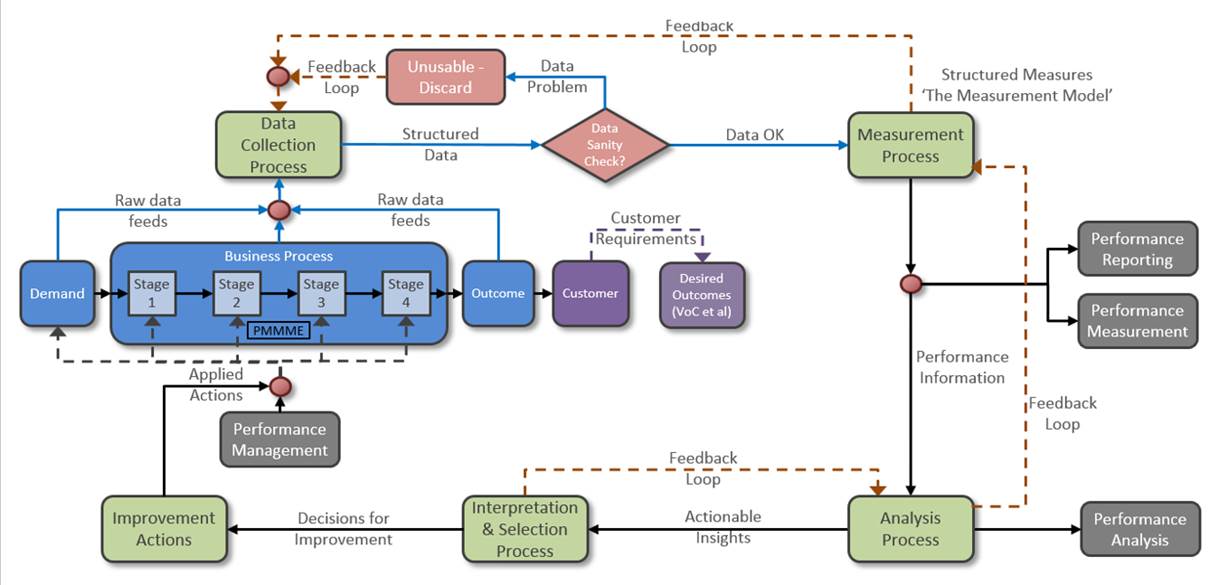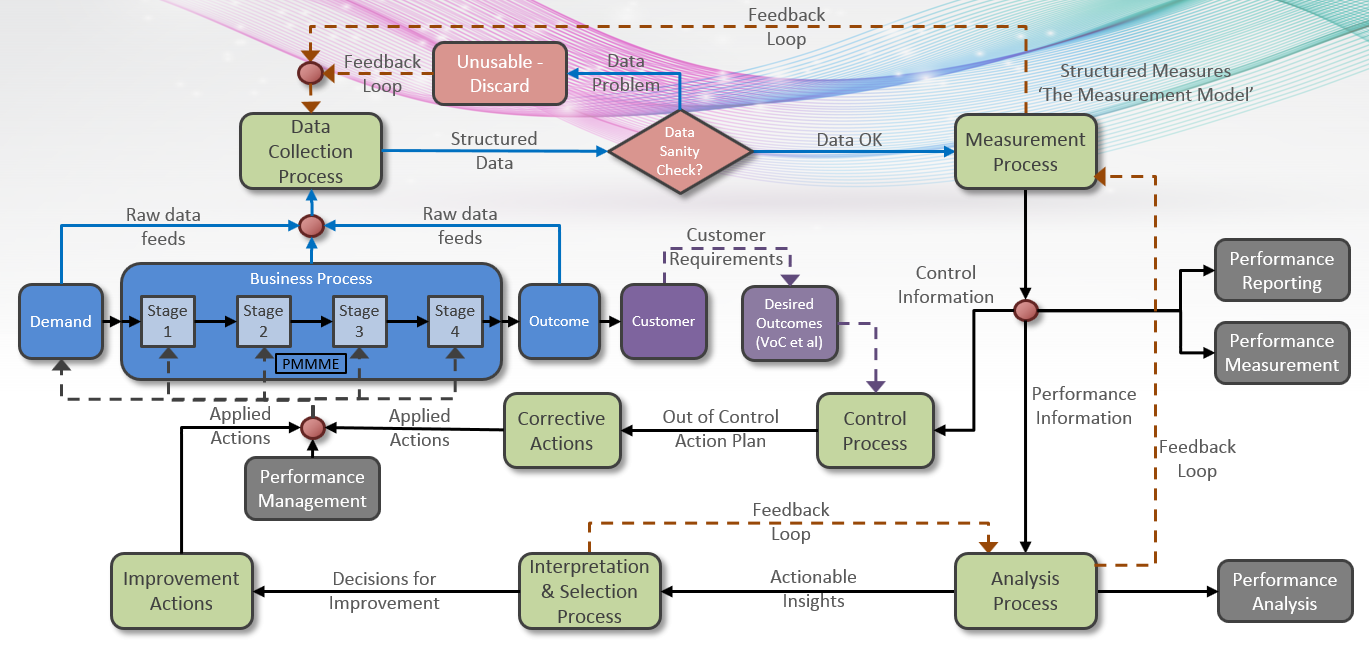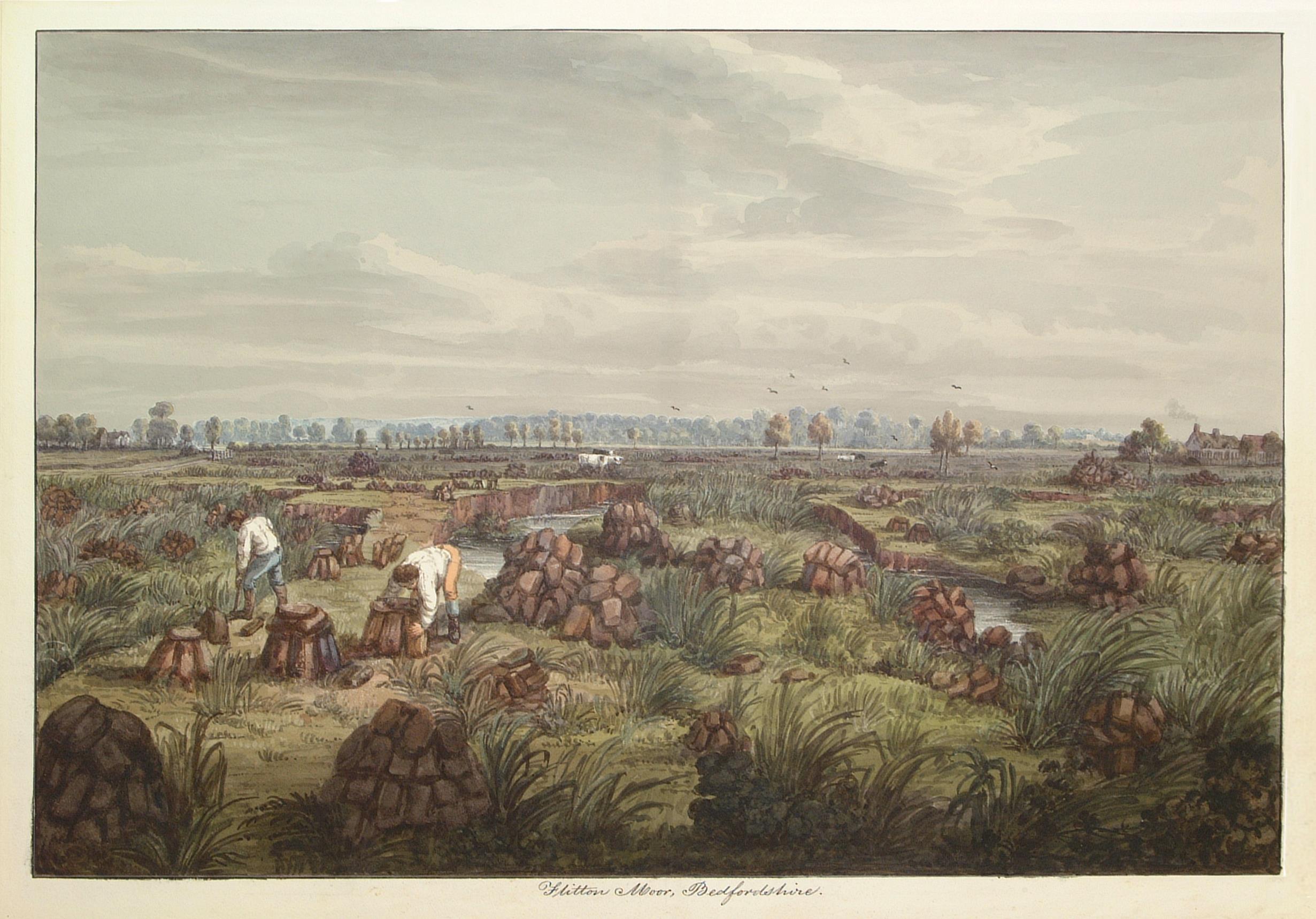Why Performance Reporting is NOT Performance Management! – Part 5 – Trust to Luck?
19/05/2017

Alan Sugar, once chairman of Tottenham Hotspurs, is something like Marmite to most people – you either love him or hate him. However, there’s quite some insight in one of his quotes – “There is a lot of luck in football. Following England is like following Wycombe Wanderers or Leyton Orient. You hope for the best and hope you are lucky.” We have seen many times that Reporting Performance is also a little like this – trust to “Luck”. In trusting to Luck, there is no Feed-forward nor Feed-back in this process. An alternative is to go beyond Reporting and use a proper Performance Measurement and Management Platform with built-in Feed-forward and Feed-back loops.
Over the past 4 posts, we introduced the idea that Performance Reporting is not Performance Management and started to examine 3 aspects of this little conundrum:
- How can we better understand what has happened in the past (in order to take more appropriate action going forward)
- What can we say about what is likely to happen going forward (with/without any intervention)
- What are the fundamental differences between Performance Reporting and Performance Management
We’ve looked at the first 2 bullets and we’ve started exploring the final bullet in some detail – What are the fundamental differences between Performance Reporting and Performance Management.
We pictured a Business Process (no matter whether private or public sector) showing the classic approach to Performance Reporting and Analysis that achieves little in actually improving the Business Process.
We then modified the picture (see below), transforming the effectiveness and productivity of those involved in Performance Management. The new picture introduced a Measurement Process and associated Measurement Model feeding forward into Performance Measurement and Performance Analysis (as well as Reporting). From the Analysis we generated Actionable Insights to go into Interpretation and Selection for Improvement Decisions followed by Actions on the Business Process – along with Monitoring and back around the loop for Performance Analysis to decide if the Improvement Action is actually having the desired impact. Crucial Feed-back loops were also introduced.

This is the first step towards Performance Management and referred to as Continuous Improvement or Process Improvement – and it is where a lot of organisations stop, unaware that there are further significant gains to be had by considering, in addition, different timescales…
If we characterise the above picture as representing the Process Improvement loop, this time we’ll add on the more immediate “Sense & Respond” or “Operational” loop. This typically runs at timescales from milliseconds (if we are working with sensors on machinery) through to months if we are considering massive capital spend projects lasting 5 – 10 years or more, while the Process Improvement loop will be typically running at the weekly through annually depending on the world-system we are considering.

In the Sense & Respond loop, exactly the same information from the Measurement Model is being used, but at a smaller granular level (conversely the longer timescale Process Improvement loop is using aggregated information from the same Measurement Model). This way, the chances of taking the wrong action because of flawed data either in the Sense &Respond or Process Improvement loops is minimised since they both feed from the same data.
In the Sense & Respond loop, we have introduced the Control Process that compares what Outcomes are being created by the Business Process with the Desired Outcomes, and feeds forward into Corrective Actions that are applied to the Business Process. Typically, in this loop we’re looking for anomalies that may pop up from time to time, and can be taken care of by those people actually working on the Business process (i.e. they do not need to go “up the line”). It is only when patterns and trends begin emerging (hence the longer timescales involved) that the Process Improvement loop kicks in.
When the Sense & Respond loop and the Process Improvement loop are not recognised and considered separately, management interference can set in and turn things into a “buggers’ muddle”.
There is one further step that we’ll look at next time that will complete the picture and deliver a coherent and integrated approach to Performance Measurement and Management.
Or you can trust to Luck!
Categories & Tags:
Leave a comment on this post:
You might also like…
My Apprenticeship Journey – Broadening Horizons
Laura, Senior Systems Engineer at a leading aircraft manufacturing company, joined Cranfield on the Systems Engineering Master’s Apprenticeship after initially considering taking a year off from her role to complete an MSc. Apprenticeship over MSc? ...
The Library app is back!
The Library app is back! It's exactly the same as before (although it will get a fresh look in a few months) and if you hadn't removed it from an existing device it should just ...
PhD researcher at the IF Oxford Science and Ideas Festival
IF Oxford is a science and ideas Festival packed with inspiring, entertaining and immersive events for people all ages. PhD researcher, Zahra attended the festival. Here she shares what motivated her to get involved. ...
What leadership skills are required to meet the demands of digitalisation?
Digital ecosystems are shifting the dynamics of the world as we know it. With digitalisation being a norm in the software industry, there is currently a rapid rise in its translation ...
My PhD experience within the Centre for Air Transport at Cranfield University
Mengyuan began her PhD in the Centre for Air Transport in October 2022. She recently shared what she is working on and how she has found studying at Cranfield University so ...
In the tyre tracks of the Edwardian geologists
In April 1905 a group of amateur geologists loaded their cumbersome bicycles on to a north-bound train at a London rail station and set off for Bedfordshire on a field excursion. In March 2024 a ...







The question is, what are people allowed to do on their own and when do they need to ask permission?
I have just been thinking about Cranfield School of Management’s 50th Anniversary and its origins in work study! The school and discipline have both come a long way since then. We no longer design jobs for people.
But what do we allow people to do on their own? and what is the point these days when people have to ask permission? Firstly, people can take control, so if not new resources are needed most people can act on their own and change things. Management usually don’t have a clue that this is even happening.
The problem comes when people have to ask for resources. If there is a delegated budget this is fine, the resources can be agreed and allocated locally, things change and the organisation moves on. But when the resource allocation isn’t delegated, what happens now. Time and effort is required to request the resource, from people who often don’t understand the problem or the situation. This may be necessary for control, but it causes delay and undermines how fast the organisation can respond to the customer.
So we need to build in guidance systems and not control systems. We need to make slack resources available to allow change and we need to tightly limit how often requests for resources have to escalate to more senior levels
Mike Bourne